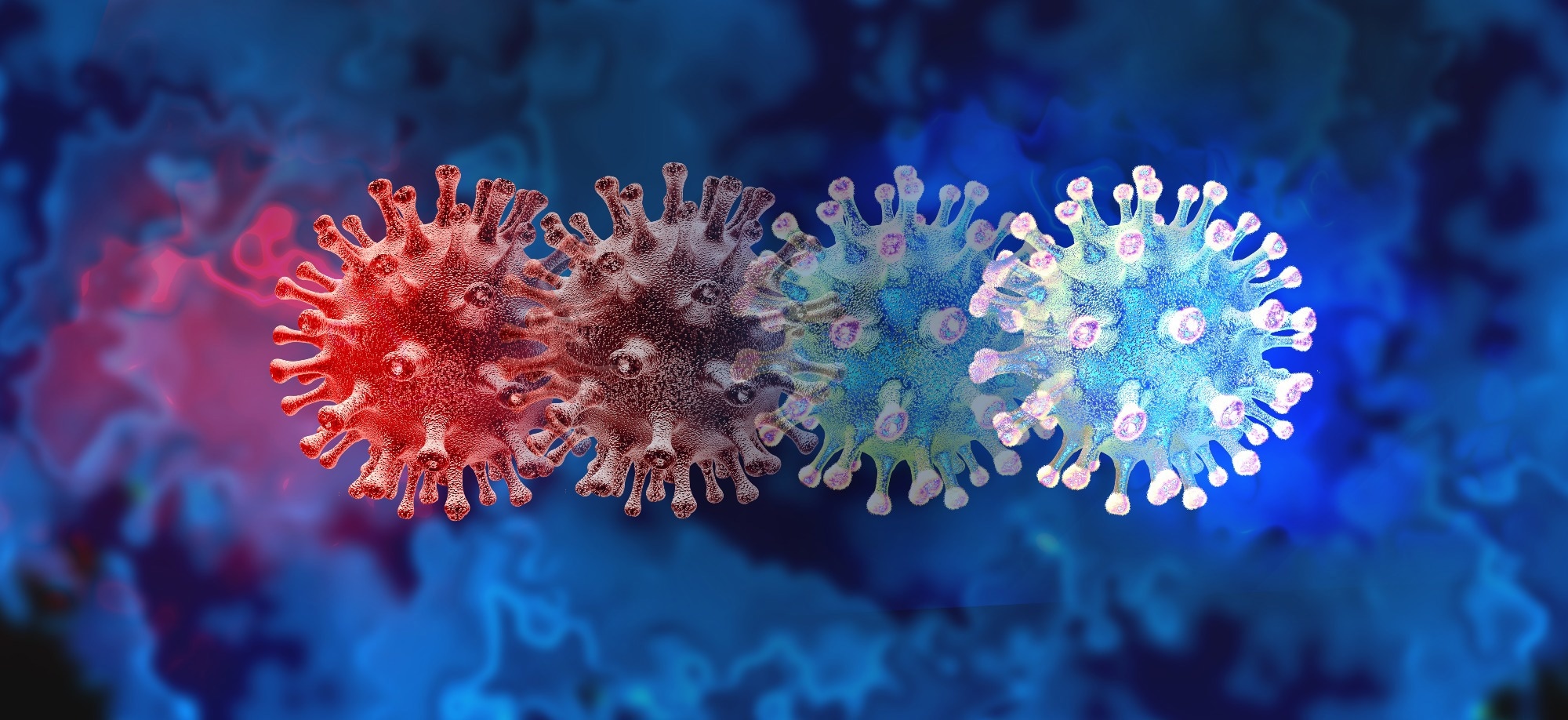A study published in Nature Communications describes that tight transmission bottlenecks restrict the evolution of severe acute respiratory syndrome coronavirus 2 (SARS-CoV-2) in the transmission chain. SARS-CoV-2 is the causative pathogen of the coronavirus disease 2019 (COVID-19) pandemic.
 Study: Rapid transmission and tight bottlenecks constrain the evolution of highly transmissible SARS-CoV-2 variants. Image Credit: Lightspring/Shutterstock
Study: Rapid transmission and tight bottlenecks constrain the evolution of highly transmissible SARS-CoV-2 variants. Image Credit: Lightspring/Shutterstock
Background
Viral evolution within and between hosts is associated with multiple bottleneck events that significantly reduce viral populations' size and genetic diversity. Transmission bottleneck refers to the number of viral particles that spread from an infected host to induce infection in another individual.
In the case of a tight transmission bottleneck, most mutations accumulated within a host are not transmitted onward. Tight bottlenecks also reduce the number of viral particles that effectively replicate to produce the next generations. In smaller populations, the selection pressure required for viral evolution becomes less effective.
Therefore, tight transmission bottlenecks restrict the adaptive evolution of a virus by preventing the onward spread of newly accumulated mutations. Tight transmission bottlenecks have previously been observed for many viruses, including human immunodeficiency virus (HIV), influenza virus, and SARS-CoV-2.
In the current study, scientists have explored whether high viral transmission rates influence transmission bottlenecks to regulate the development of more aggressive SARS-CoV-2 variants.
Transmission dynamics and genetic diversity of SARS-CoV-2
A total of 168 individuals from 65 households participated in the study. Viral isolates collected from the participants were subjected to high-quality whole genome sequencing to identify viral variants.
Based on the sequencing results, the final transmission analysis included 45 households, 110 individuals, and 134 possible transmission pairs. The SARS-CoV-2 variants of concern (VOCs) identified in these households were alpha, beta, delta, and omicron.
Rapid transmission of SARS-CoV-2 was observed in the studied households. The average duration of symptom onset between the index case and the contact was 2 – 3.5 days. However, no significant difference in transmission rate was observed between viral variants.
The sequencing of viral isolates collected from index cases revealed a low genetic diversity in all samples. About 51% of the samples had no single nucleotide variants (SNV), 42% had 1-2 SNV, and 7% had three or more SNV. None of the samples had more than 5 SNV.
Transmission bottleneck
The genetic diversity shared between the household members of a transmission pair was used to calculate the transmission bottleneck. Within a household, a transmission pair includes the index case as the donor and the contact as the recipient.
The comparison of SNV frequency between the donors and recipients revealed only a single shared SNV in six possible transmission pairs from a single household. This SNV was found in all three individuals in the household at a frequency of 0.56, 0.97, and 0.24, respectively. This is indicative of a tight transmission bottleneck.
Further quantitative analysis revealed that the overall bottleneck sizes of the VOCs (alpha, delta, and omicron) and non-VOCs were 1 and 2, respectively.
Study significance
The study explores the relationship between SARS-CoV-2 transmissibility and transmission bottleneck size. The study finds a rapid transmission rate for all tested VOCs in sampled households. Moreover, viral isolates collected close to the time of transmission reveal a low genetic diversity within and between hosts.
The study estimates tight transmission bottlenecks for SARS-CoV-2 VOCs, which can prevent the spread of newly accumulated mutations and reduce the effectiveness of natural selection. In other words, tight transmission bottlenecks inhibit the evolution of highly mutated viral variants in transmission chains of acutely infected individuals.
Overall, the study findings highlight that selection over prolonged infections in immunocompromised patients may drive the evolution of SARS-CoV-2 VOCs.